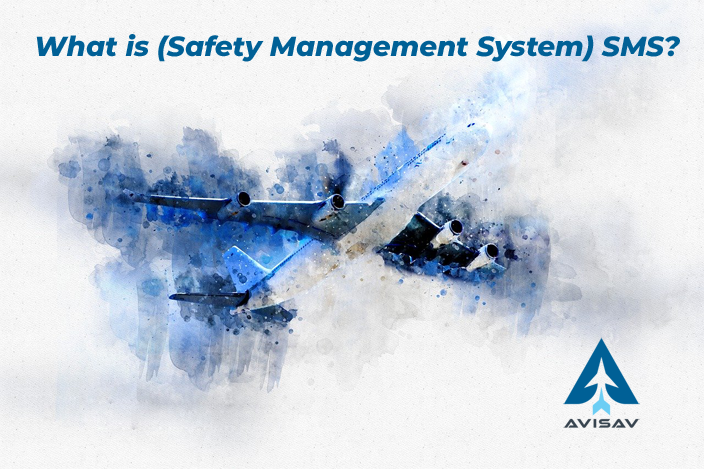
What is Safety Management System? And why we need it?. To begin with, accidents and incidents rarely occur due to individual factors. Usually, they occur due to simultaneous occurrences of several causes (for example, root cause, contributing factors… latent factors, etc…). Most of those causes are usually hidden, at first glance, and they are discovered through further post-incident investigation. However, some of the causes are active, namely, obvious mistakes.
Safety Management:
Historical Background.
Before, safety management processes heavily relied on the brute force principle (Reactive Safety). To illustrate, investigation took place after the occurrence or problems arise, in general. Afterward, the mistake would be corrected and lessons learned. However, the price has been almost always too high. Consequently, casualties were very high…!
Modern Safety Management System.
Fortunately, today, we do not rely on the trial and error principle. We tend to foresee all possible problems and obstacles that may occur (Predictive Safety). That’s why we are using advanced safety management systems in aviation. However, various aviation organizations management systems have different kinds of flaws. Therefore, the ICAO (International Civil Aviation Organization) introduced Annex 19 (Safety Management). In the first place, the ICAO’s is committed to standardize. improve and communicate safety best practices. Hence, the ICAO issued annex 19 on 23 Feb. 2013. Particularly, to address Safety Management System (SMS)
Organizational Factors
Furthermore, the new understanding of safety introduced the organizational factors. For example, we can visualize different levels of management, design and operational environments as surfaces in which the latent states are openings which allow a chain of events to progress. That will, in the end, cause an incident or accident.
This accident model is especially clearly visible on the example of aviation. Hence, there are different safety management system levels. So then, we must be constantly improving and updating this system. They all have one common goal: preventing, avoiding, and alleviating occurrences, risks, hazards, and flaws in the overall aviation sector and processes.
Thus, we need the SMS – the Safety Management System.
What is the mission of (Safety Management System) SMS?
For the most part, safety management in aviation is a constant mission whose purpose is to improve safety, customize the organization’s operations, and improve day-to-day performance by training and effective communication.

According to the International Civil Aviation Organization, SMS, which stands for Safety Management System (SMS) implies managing organizational structures in aviation, procedures, and policies, as well as the accountabilities.
The safety management system consists of many parts that have to be aligned in order to make the system effective. SMS is an organized safety management approach that includes the appropriate organizational structure, system of responsibility, policy, and procedures.
Top to Bottom Approach
The SMS is organized “from top to the bottom”. This means that the organization manager is responsible for implementing and continually satisfying the requirements of SMS. Without full support from the responsible manager, the SMS will not be effective and it is therefore important to choose the most adequate person for this position.
No “One Size Fits All”
Ordinarily, there are different types of aviation organisations’ management models developed for different types and sizes of service provider organizations. An SMS general template will be suitable for service providers. Thereby, the more complex organizations will require a customized SMS following the general outlines. Organizations should, therefore, consider the size, nature, and complexity of their operations for their SMS. They should also accordingly ensure the necessary resources.
According to the Federal Aviation Administration, service providers are responsible for setting up SMS within their organization. The Civil Aviation Agency is responsible for accepting and supervising the SMS of the service provider.
What areas does the SMS cover?
Direct
SMS is a comprehensive system that manages safety in different aviation areas. It follows a pre-established plan, i.e. organization strategy. The long-term plan is to establish and to monitor, analyze and reduce the safety risks on a daily basis. SMS activities aim at the continuous and gradual improvement of safety. Safety data is documented and is available to everyone having permission to access it in the official documentation of the organization.
However, many people from this field wonder what areas the SMS covers. There are areas directly covered by SMS and those that it covers indirectly.
The areas directly covered by SMS are:
1) maintenance;
2) exploitation;
3) training;
4) operations.
Indirect
There are also areas that are indirectly covered by SMS. Those are areas that don’t depend exclusively on the premises of this system, but it does improve the overall results and functionality. The SMS indirectly covers the following areas:
1) Finances;
2) Legal affairs;
3) Human Resource Management.
What are the four components / pillars of the SMS?
There are four pillars of the Safety Management System. Those include:
- Policy
- Risk Management
- Safety Assurance
- Safety Promotion
What does the SMS contain?
Looking at the technical standpoint of aviation safety, we must point out that the aviation safety management system must contain the following:
- interaction between the parts of the system
- system tasks
- the necessary human training
- hardware components of the system
- software system components
- working environment
- contracted and purchased products and services.
Establishing the SMS framework in aviation
In accordance with ICAO Guidelines 9859 – Management System, we can say that the framework for the establishment of the SMS for service providers includes 4 components. Those are safety policies and goals, safety risk management, safety assurance, and safety promotion.
SMS First Component
Safety policy and goals include the following:
- Commitment and Responsibility of Leadership
- The ultimate responsibility for the safety
- Identification of key safety personnel
- Coordination of planning of procedures in the case of danger
- SMS documentation
SMS Second Component
Managing safety risks includes:
- Danger Identification
- Assessment and mitigation of risks
SMS Third Component
Safety assurance implies:
- Monitoring and Measurement of Safety Performance
- Managing Changes
- Continuous improvement of SMS
SMS Fourth Component
Promotion of safety includes:
- Training
- Communication
The Bottom Line
In conclusion, we can say that the primary objective of aviation safety is to reduce the factors that affect it. Accordingly, those factors should be reduced to a minimum or completely eliminated.
In accordance with the international and national requirements, as a rule, the service provider must implement the SMS, define the safety policy of the organization, and conduct according to its guidelines.
To summarize, the safety policy must reflect the organization’s commitment to overall safety atmosphere, procedures, and controls. Hence, It must include a clear point of view on guaranteeing and providing the necessary human and financial resources for the implementation of the SMS. Also, it must include the appropriate support and it has to be communicated to the entire organization.
In conclusion, the SMS – Safety Management System in aviation leads to a safe working environment and the best possible results in this field… Do you want to learn more about SMS in aviation, watch this short video. And check out our latest Aviation Safety Courses.
